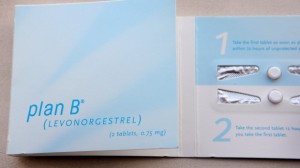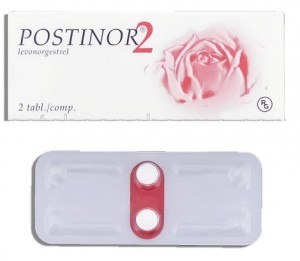About Emergency Contraception
Globally, 86 million pregnancies were unintended; of these, 41 million ended in abortions, 33 million in unplanned birth, and 11 million in miscarriage.
Sexually-active women of reproductive age in developing countries experience high rates of unintended pregnancy. Globally, 86 million pregnancies were unintended; of these, 41 million ended in abortions, 33 million in unplanned birth, and 11 million in miscarriage. When women and couples can access a wide range of contraceptive methods, they are more likely to find a method they like and can use over a period of time, to switch methods when life circumstances change, and to meet their contraceptive intentions.

Source: CBSlocal
Commodity Context
Emergency contraception is an important component of a comprehensive family planning program. It offers a reliable option to address the needs of the populations most at risk of unintended pregnancies. While several products can be used as emergency contraception, the levonorgestrel-alone emergency contraceptive pill (ECP) is the only one that is widely available in developing countries. It commonly consists of a packet containing two tablets of 0.75 mg each, labeled to be taken 12 hours apart. Recent research has shown however that the full dose of 1.5 mg can also be taken at once and does not cause more side effects than two 0.75 mg doses 12 hours apart.[1] ECPs are safe and appropriate for dispensing by a pharmacist or drug seller without a prescription. Currently, they are registered in over 150 countries, including many lower income countries.
Product Efficacy
ECPs can be used up to 5 days after unprotected sex but are generally more effective the sooner they are used. Extensive research on how ECPs work suggests that interference with ovulation is the primary and possibly the only mechanism of action.[2] ECPs do not have any effects after fertilization. ECPs cannot terminate or interrupt an established pregnancy and will not stop a fertilized egg from implanting in the uterus, nor have they been shown to harm a developing embryo.[3] Depending on the formulation used and timing of use, ECPs can reduce a woman’s risk of becoming pregnant from a single act of intercourse between 75 and 89 percent.[4]
Products Available
Dedicated ECPs are available from over 90 different manufacturers – and can be purchased at central level (i.e. by central procurement agencies) for as low as $1 per pack (depending on quantities). There are more than 100 ECP brands used around the world; the most common types include Postinor, Pregnon, NorLevo, and Escapelle.
Common Barriers
Currently there is inadequate knowledge and information regarding ECPs in most developing countries. Since ECPs are still relatively unknown by health care providers, it is an underutilized method in some countries, even when it has been centrally procured. Where the product is not registered, it is generally because of conservative policies and a misconception that ECPs cause abortion. In addition, the majority of the product sold outside of Europe and the US is a two-pill formulation, which is not as easy to use as the one-pill formulation.
For more information on ECP brands, types and manufacturers, please check the International Consortium for Emergency Contraception (ICEC) website here and the UN Every Woman Every Child webpage.
[1] Two other compounds have been approved for emergency contraceptive use in some contexts; In addition, IUDs can be used after unprotected sex to prevent the pregnancy; and certain regular contraceptive pills can also be used using what is called the Yuzpe method.
[2] Some evidence suggests that ECPs may also function by preventing the egg and sperm from meeting.
[3] International Consortium for Emergency Contraception (ICEC)/International Federation of Gynecology and Obstetrics (FIGO). Mechanism of action: how do levonorgestrel-only emergency contraceptive pills (LGNECPs) prevent pregnancy? March 2012
[4] Reproductive Health Supplies Coalition. Emergency contraceptive pills. Caucus on New and Underused Reproductive Health Technologies: Product Brief. Updated May 2013


 This website is made possible by the support of the American People through the
This website is made possible by the support of the American People through the